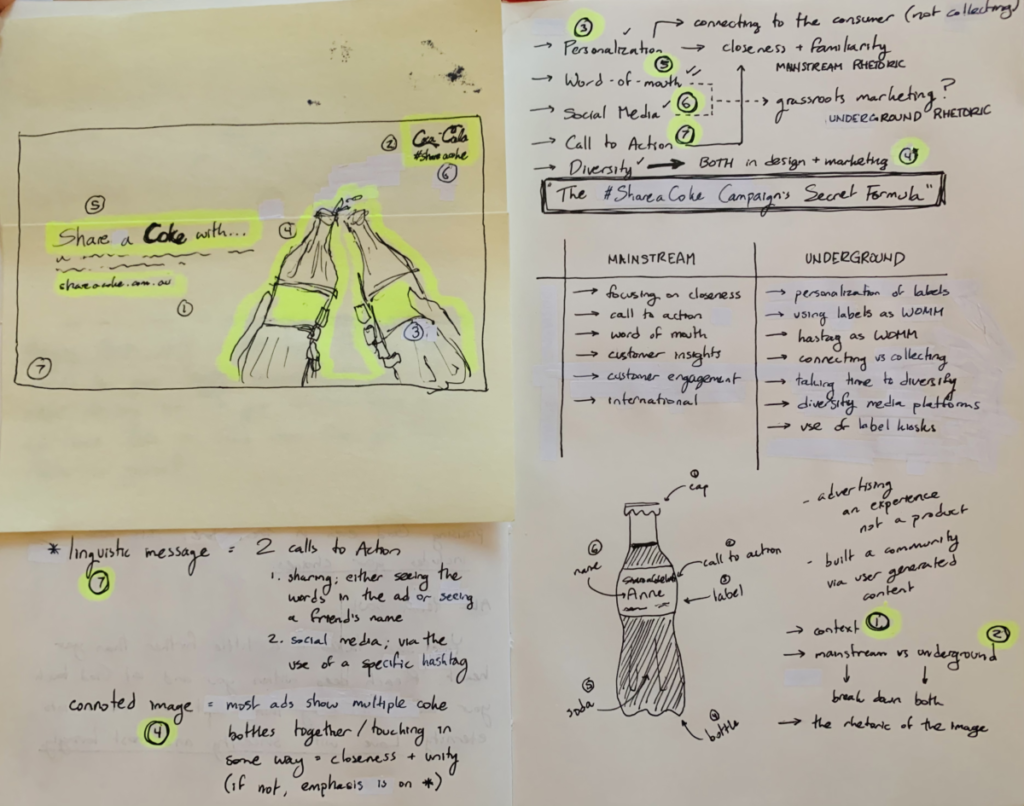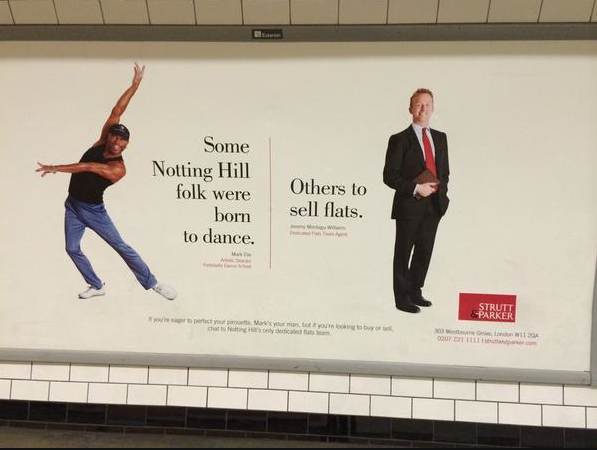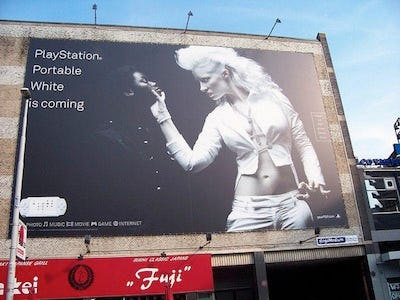Tag: Garnet Garcia (Page 1 of 2)

Barnhart, Brent. “How to Make Sure You’re Marketing to Gen Z the Right Way.” Sprout Social, 11 Nov. 2019, sproutsocial.com/insights/marketing-to-gen-z/.
Codella, Daniel. “The Winning Coca-Cola Formula for a Successful Campaign.” Wrike, Wrike, 6 Apr. 2018, www.wrike.com/blog/winning-coca-cola-formula-successful-campaign/.
Crawford, Elizabeth Crisp, and Jeremy Jackson. “Philanthropy in the Millennial Age: Trends toward Polycentric Personalized Philanthropy.” Independent Review, vol. 23, no. 4, 2019, p. 551+. Gale Academic OneFile, https://link.gale.com/apps/doc/A581175535/AONE?u=cuny_nytc&sid=AONE&xid=0dea4ab3. Accessed 23 Nov. 2020.
Heller, Steven. “The Underground Mainstream.” Graphic Design Theory: Readings from the Field, by Helen Armstrong, Princeton Architectural Press, 2012, pp. 98–101.
Henderson, Geraldine Rosa, and Jerome D. Williams. “From Exclusion to Inclusion: An Introduction to the Special Issue on Marketplace Diversity and Inclusion.” Journal of Public Policy & Marketing, vol. 32, 2013, pp. 1–5. JSTOR, www.jstor.org/stable/43305308. Accessed 23 Nov. 2020.
“How a Campaign Got Its Start Down Under – News & Articles.” The Coca-Cola Company: Refresh the World. Make a Difference, The Coca-Cola Company, 25 Sept. 2014, www.coca-colacompany.com/news/how-a-campaign-got-its-start-down-under.
Kozinets, Robert V., et al. “Networked Narratives: Understanding Word-of-Mouth Marketing in Online Communities.” Journal of Marketing, vol. 74, no. 2, 2010, pp. 71–89. JSTOR, www.jstor.org/stable/20619091. Accessed 23 Nov. 2020.
Kumar, V. “Evolution of Marketing as a Discipline: What Has Happened and What to Look Out For.” Journal of Marketing, vol. 79, no. 1, 2015, pp. 1–9. JSTOR, www.jstor.org/stable/43784378. Accessed 28 Nov. 2020.
Liu, Yizao, and Rigoberto A. Lopez. “The Impact of Social Media Conversations on Consumer Brand Choices.” Marketing Letters, vol. 27, no. 1, 2016, pp. 1–13. JSTOR, www.jstor.org/stable/26177931. Accessed 29 Nov. 2020.
O’Connor, Padraig. “What To Know When Marketing To Millennials.” Social Media Week, 28 July 2015, socialmediaweek.org/blog/2015/07/marketing-to-millennials/.
Sonesson, Göran. “Rhetoric of the Image.” Encyclopedia of Semiotics. : Oxford University Press, , 2007. Oxford Reference. Date Accessed 28 Nov. 2020 <https://www.oxfordreference.com/view/10.1093/acref/9780195120905.001.0001/acref-9780195120905-e-248>.
Tarver, Evan. “Why the ‘Share a Coke’ Campaign Is So Successful.” Investopedia, Investopedia, 28 Aug. 2020, www.investopedia.com/articles/markets/100715/what-makes-share-coke-campaign-so-successful.asp.
Whitler, Kimberly A. “Why Word Of Mouth Marketing Is The Most Important Social Media.” Forbes, Forbes Magazine, 9 Sept. 2019, www.forbes.com/sites/kimberlywhitler/2014/07/17/why-word-of-mouth-marketing-is-the-most-important-social-media/?sh=4b98dc9e54a8.
Underground creators are always intentionally or unintentionally testing the ground for new things and many times those new things are met with some rejection. However, once that “thing” receives enough acceptance it becomes a demographic to target and the mainstream takes advantage of it. Mainstream puts a label or gives the once underground design some spotlight, bringing it to widespread acceptance. Once that happens, the “thing” is no longer “underground”. Mainstream design is also influenced by the fact that once an underground thing becomes mainstream, the overall tolerance and definition of what is “mainstream” changes. If the underground creator’s intention was to change the game, to influence the culture of the mainstream, then the underground creator achieves their goal. If that was not the creators goal, the rules of the game in the mainstream still change.
I believe that my design (#ShareaCoke) and designer (The Coca-Cola Company) fir into this dichotomy not from from the design perspective of advertising, but rather the marketing perspective of advertising. At the time of its release, Coca-Cola understood that they were in fact too mainstream. They were too familiar and a big corporate brand. Millennials and younger were their target market, which was and is a demographic well known for not trusting in corporations. The “underground” in this scenario lies in three factors: personalization, word-of-mouth, and social media.
Word-of-mouth (WOM) was well established as a powerful and influential marketing technique. However, up until the early 2010s it had been seen through the lens of “a marketing world untouched by the Internet. …accessibility, reach and transparency have empowered marketers … like never before.” Coca-Cola tapped into the power of the digital world rather reluctantly, as it was still an unknown factor at the time of the campaign’s release, but its success in building international was heavily reliant on internet and social media platforms. Combine WOM influence with social media influence and you have quite a bit of reach. The final ingredient is the personalization of the ad – adding the names – that allowed Coca-Cola to begin “…speaking to our fans at eye level.”
The personalization of the #ShareaCoke took into account the almost “avant-garde” mentality that was the millennial generation. This mentality of brand promotion being primarily “peer produced” is what one could consider “underground”. It wasn’t a mainstream thing to connect on that level with the consumer. Unknowingly, Coca-Cola was able to exponentially increase its reach by combining that underground mentality with an underground method of marketing as people started to run with this “personalized” ad and flood social media with the WOM buzz. If one considers that Instagram was launched in October of 2010, and the #ShareaCoke campaign started in Australia in 2011, then I believe it is safe to say that Coke-Cola radically changed the advertisement and marketing industry, its relationship with social media influence, and discovered the power of the new millennial mindset, thus changing the mainstream marketing game forever.
—
Crawford, Elizabeth Crisp, and Jeremy Jackson. “Philanthropy in the Millennial Age: Trends toward Polycentric Personalized Philanthropy.” Independent Review, vol. 23, no. 4, 2019, p. 551+. Gale Academic OneFile, https://link.gale.com/apps/doc/A581175535/AONE?u=cuny_nytc&sid=AONE&xid=0dea4ab3. Accessed 23 Nov. 2020.
“How a Campaign Got Its Start Down Under – News & Articles.” The Coca-Cola Company: Refresh the World. Make a Difference, The Coca-Cola Company, 25 Sept. 2014, www.coca-colacompany.com/news/how-a-campaign-got-its-start-down-under.
Kozinets, Robert V., et al. “Networked Narratives: Understanding Word-of-Mouth Marketing in Online Communities.” Journal of Marketing, vol. 74, no. 2, 2010, pp. 71–89. JSTOR, www.jstor.org/stable/20619091. Accessed 23 Nov. 2020.


I will be honest: I did not understand much of the reading and I think McLuhan talks too much. Maybe it’s because I am, personally, a believer in the statement made by General David Sarnoff: “We are too prone to make technological instruments the scapegoats for the sins of those who wield them. The products of modern science are not in themselves good or bad; it is the way they are used that determines their value.” I think McLuhan does make some valid points but I’m also left to wonder if I’m truly understanding them at all.
I do agree with McLuhan’s point on that technology has served as an extension of man. He uses good examples in the beginning of his piece with the railway and the lightbulb on how because of these inventions humanity was introduced to new ways of existing. The way we functioned and related to everything from social structures to time and space was changed because of the railroad. Electric light allowed us to completely push past the barriers of working in times and environments limited to light. In this case, I’m assuming the railroads and the electric light are “mediums”. McLuhan explains that because of these mediums we are able to extend ourselves. We can extend our minds, our understanding, our control on reality and our lives.
In Chapter 7, McLuhan speaks of the role of the artist in the adjustment to technology. He states that artists must “move from the ivory tower to the control tower of society”. There is a big sense of responsibility here and I do like the imagery of it. He states that we as artists are responsible for helping form an “analysis” of the technology around us and how it effects us. I can understand to some extent that it is often artists that help visualize and connect people to things happening in the world and how it’s affecting us. I think about how when social media started to become very very popular, it was artists that often helped communicate the feeling of being overwhelmed or the dangers of instant gratification and equating likes to self-worth.
I do not think I understand the concept of “the medium is the message”, however I do understand the concept of technology allowing us to reach a new scale of extension with ourselves and the people around us. Every time new technology is introduced we have a whole new “reach” on the world around us and everything starts to change. The further the jump in technology though the more of an adjustment period is required. I think that holds some truth. Technology in the last 20-30 years has moved so fast and evolved at such a rate that I think a lot of society just can’t adjust as quickly. Artists are often the one to pick up the message and translate it to the world around us. I think that’s a pretty powerful ability that we have. We are sensitive to tonal shifts in ourselves and in society and artists we know how to communicate those shifts into physical/visible mediums that others can understand. The more we do that, the easier it might be for everyone to be aware of the new ideas being shared. We ourselves might be able to introduce a few new ideas as well.
Jan Tschichold believed that design was meant to focus on clarity. He mentions how “old typography” aka the designs of the past such as the Renaissance focused more on elaborate beauty of the design itself as opposed to the focus being on what the text was trying to communicate. Tschichold believed that one should design with “form being created out of function”; the form of the design must come from what is needed for the content to be communicated as clearly as possible. Clarity triumphs ambiguity. Everything that is not absolutely essential to communicate the content is to be removed.
Karl Gerstner believed design could be approached from an entirely scientific/mathematical approach. He believed that just like science, possibilities could not be delimited absolutely and that there was always a group of solutions that worked best to solve the problem. In this case, it was design problems. Similar to Tschichold, Gerstner believes that design should be thought out. Using his grid, the elements of a design could be simplified and reduced to only the bare bones of the necessary design elements.
Josef Müller-Brockmann also believed in a very mathematical way of thinking like Gerstner (another who worked and focused on grids as guides) and emphasized a focus on the simple and objective like Tschichold. He also however believed that design had a level of social responsibility on the creators part. He believes that the use of directness and systematicness in design is “vital” for sociopolitical life. The focus of design, according to Müller, was to cultivate objectivity, rationalize the production process, and “penetrate to the essentials”.
I believe all 3 designers would agree on these points: Less is more. Design should be broken down to only the elements that are absolutely necessary to communicate the context. Design must remain objective as opposed to subjective, being created from a technical, almost mathematical process, though that should not completely eliminate the creativity that goes into the design. If anything, the limits of the process forces the designer to come up with more creative solutions that prioritizes the function to create the form.
According to Walter Gropius and his The Theory and Organization of the Bauhaus, the thing that art lacked in the past was that it isolated itself from the world and environment around it. Different kinds of arts and practices were isolated from each other as if they had nothing to do with each other. According to Gropius, this form of teaching and development resulted in “useless social drones” that were ultimately fruitless in the productive life. Being removed from the rest of life does not make a good artist, according to Gropius.
In László Moholy-Nagy’s Typophoto, he makes a similar statement and says that typeface and typesetting “ignored the new dimensions of life” by which he meant the modern life of his time. He encourages the joining of methods and embracing techniques from other disciplines like photography, instead of pretending that the two mediums are two completely different things that must be kept separate. In doing this, typophoto would allow for new relationships between the content being read and visual experience. Both stances are simple: integration of mediums and mindsets of different mediums allow for a stronger, more wholistic artistic application.
I tend to consider many of the teachings of the Bauhaus movement boring. I find the “universal language” to be an interesting practice in the context of its time but ultimately a slightly outdated principle in art. However, I wholeheartedly agree with the statements made in Gropius’ text. The first one being that “academies” should allow an artist to discover where their strengths and weaknesses lie and and recognize that ones “elementary expression” can vary from person to person. It is said variation that makes the collaborative process that much more powerful. The second being that in pulling from various artistic mediums and being aware and in touch with the “life” around you makes you a stronger artist. Believing that one form of art solely exists in a vacuum on its own ultimately hinders the artist.
—
One of the most interesting and scarily spot on points I saw in the readings was not only that the methods of communication would change drastically but specifically how the methods would change would be how we store knowledge. Herbert Bayer’s On Typography specifically states that the ability to store information in micro fashion will change the design of libraries and how we store knowledge, and that we will “have any and all desired information available and ready when needed… unburdening our brains from memory ballast… the book may be limited altogether…” How interesting it is that that is almost exactly what has happened. While the book might have not completely disappeared from existence, print is becoming less and less necessary as we rely more on the “micro-storage” available to us at a moments notice. I’ve grown up mostly in a generation where we can learn about anything and everything with a few simple keystrokes into our phones and not all of that information has to be memorized in order for me to use it.



Recent Comments